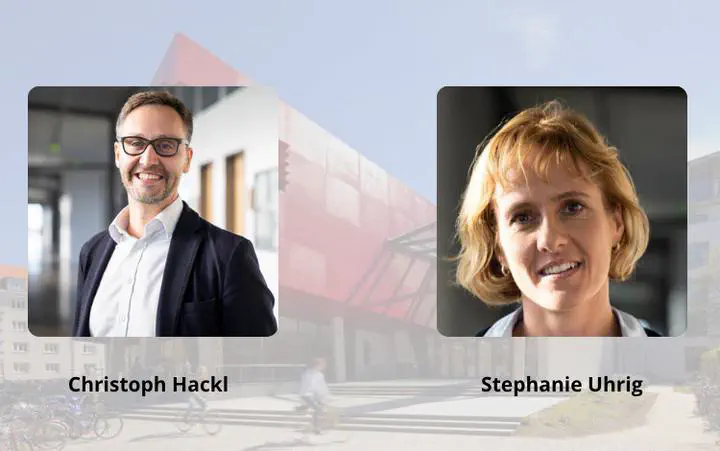Christoph M. Hackl, Hochschule München “Airborne wind energy can become a valuable and flexible contributor to the European power grid”

This time we spoke with Christoph M. Hackl and Stephanie Uhrig from Munich University of Applied Sciences (HM). This is the second article of a series based on interviews with AWETRAIN supervisors.
Airborne wind energy is gaining recognition as a promising addition to the renewable energy mix. At the Munich University of Applied Sciences (Hochschule München, HM), Professors Christoph M. Hackl and Stephanie Uhrig are exploring how these systems can be efficiently integrated into the grid. Through their work within the AWETRAIN doctoral training network, they bring crucial expertise in electrical machines, control systems, and power technology, ensuring that AWE development aligns with real-world grid requirements.
Within AWETRAIN, their team focuses on understanding how airborne wind energy systems interact with the electrical grid and how they can enhance both stability and efficiency.
“Airborne wind energy can become a valuable and flexible contributor to the European power grid,” explains Prof. Hackl. “Our goal is to understand how these systems influence grid dynamics and how to integrate them efficiently into future energy networks.”
Both professors co-lead the Institute for Sustainable Energy Systems (ISES) at HM, a research centre established in 2019 that fosters applied research in sustainable energy technologies. With around 40 doctoral candidates, ISES provides an interdisciplinary environment that connects advanced technical research with system-level applications.
“Our role in AWETRAIN is to identify the benefits of airborne wind energy for transient and stationary grid stability,” adds Prof. Uhrig, “and to outline useful operation strategies from a grid perspective.”
For Hackl and Uhrig, collaboration across disciplines is fundamental to innovation in renewable energy. Airborne wind energy, they note, sits at the intersection of aerodynamics, control theory, power electronics, and energy systems, and progress depends on uniting these fields.
“Participating in the ongoing energy transition requires interdisciplinarity as a core principle,” says Prof. Hackl. “Single-discipline approaches can overlook practical challenges. Projects like AWETRAIN ensure that technical development goes hand in hand with real-world applicability.”
At Hochschule München, AWETRAIN doctoral candidates will work within a dynamic and collaborative environment that combines academic excellence with exposure to industry-led research.
“We provide excellent mentoring in small, and dedicated teams,” notes Prof. Uhrig. “Exchanges with other doctoral candidates often spark new ideas and help strengthen the overall impact of their research.”
Both professors share a strong personal motivation for their involvement in AWETRAIN, and for advancing the broader energy transition.
“My curiosity is triggered by technologies like AWE,” adds Prof. Uhrig. “There’s so much ahead waiting to be discovered, and working with such bright researchers makes the journey even more rewarding.”
As AWETRAIN continues to grow, the contribution of Hochschule München and its researchers remains essential, ensuring that airborne wind energy evolves not only as a cutting-edge technology but also as a reliable, and grid-ready component of Europe’s sustainable energy future.